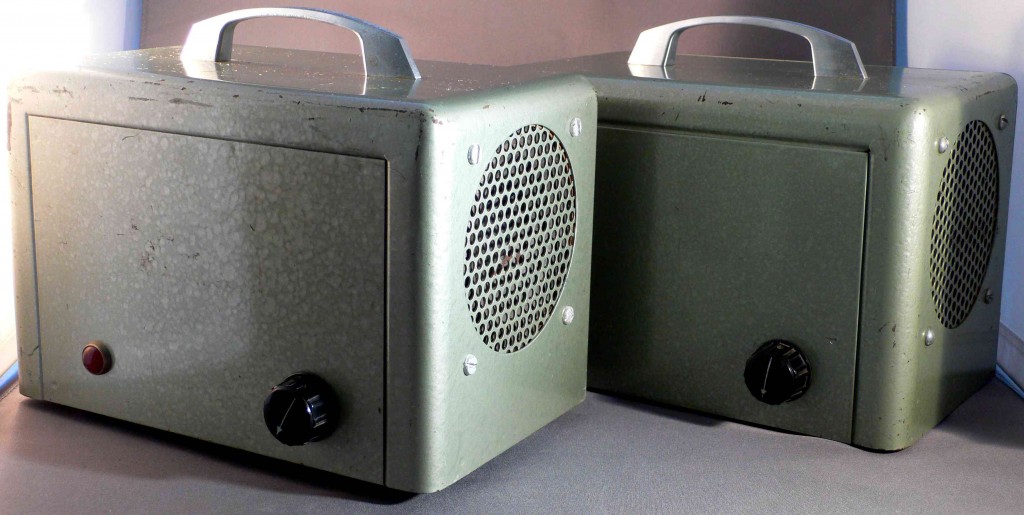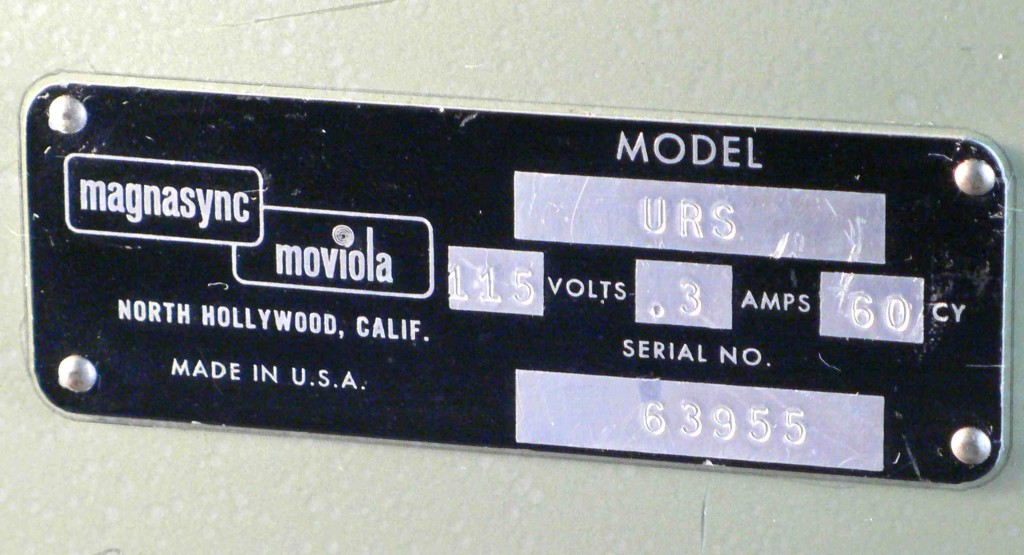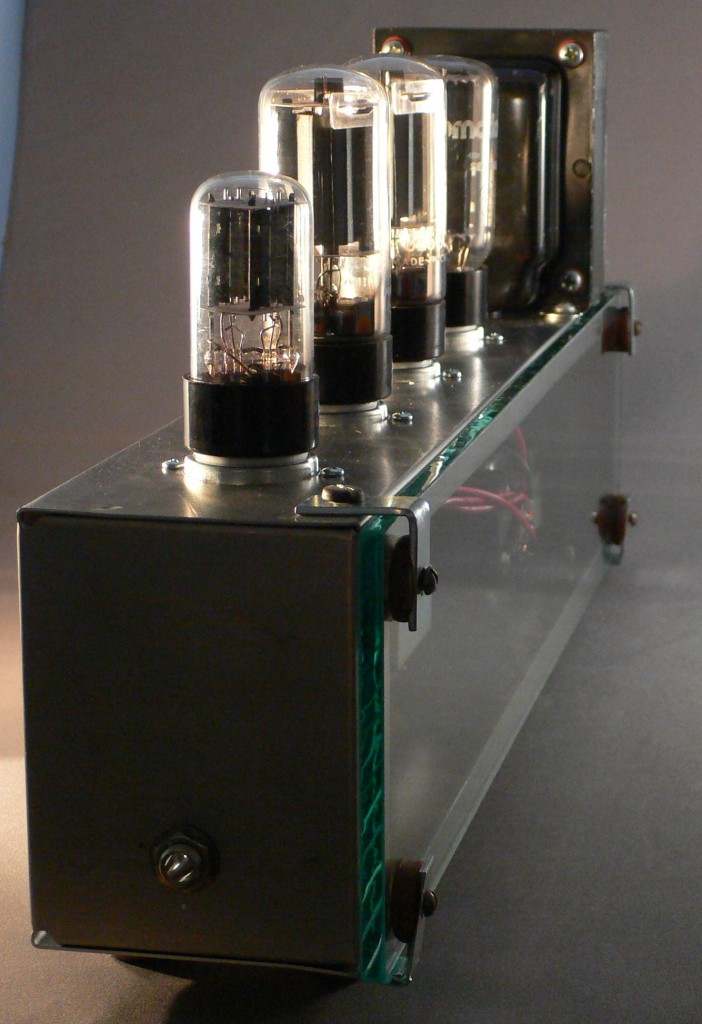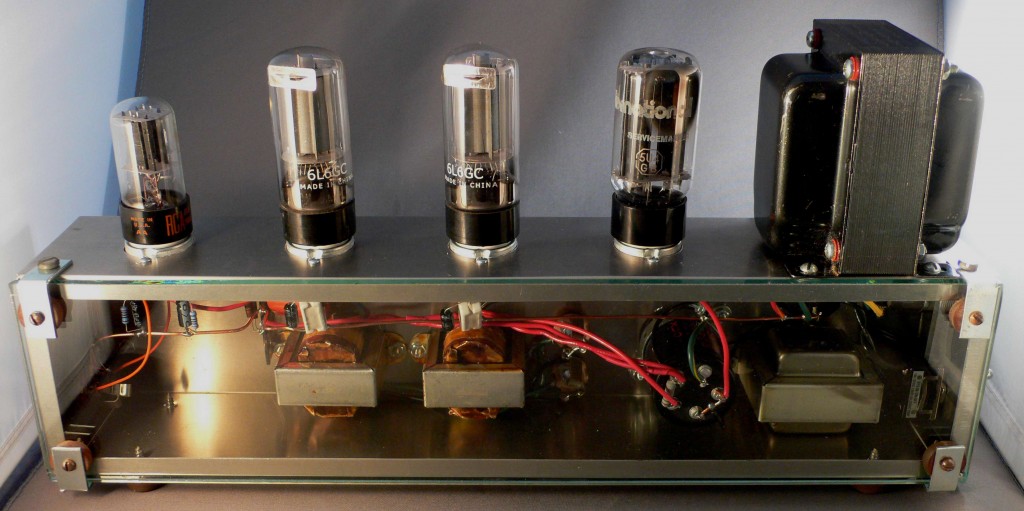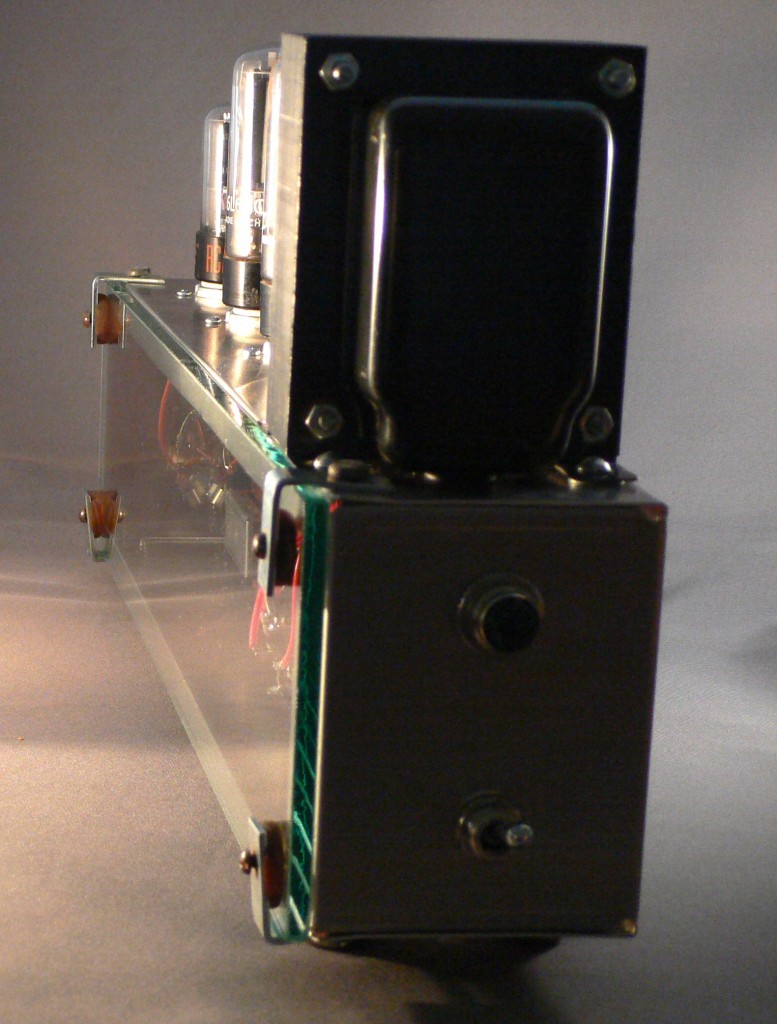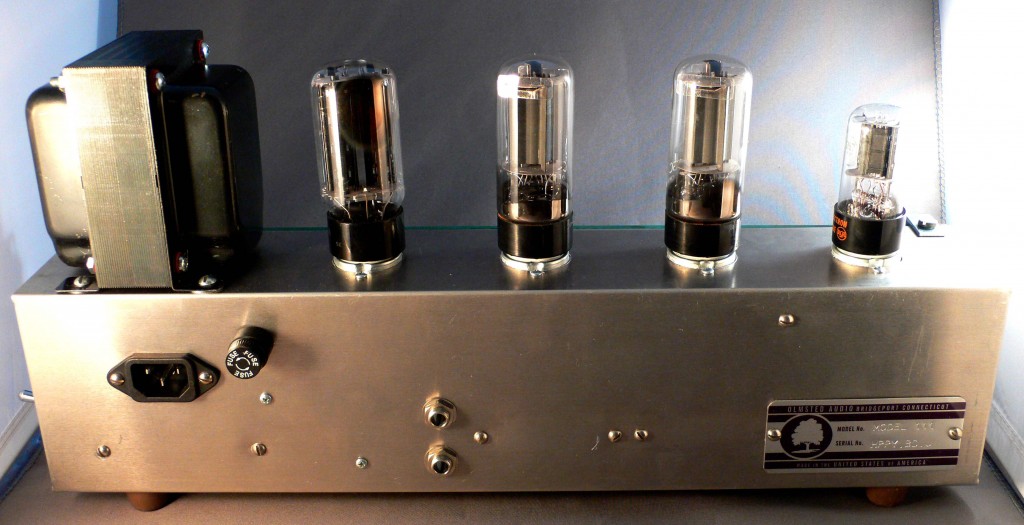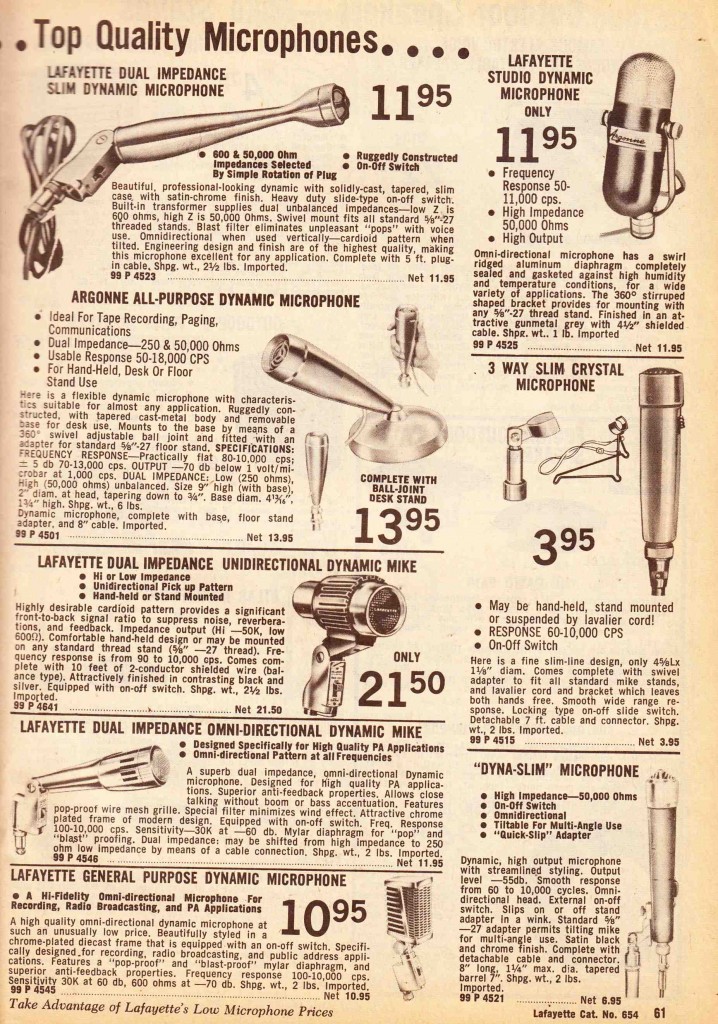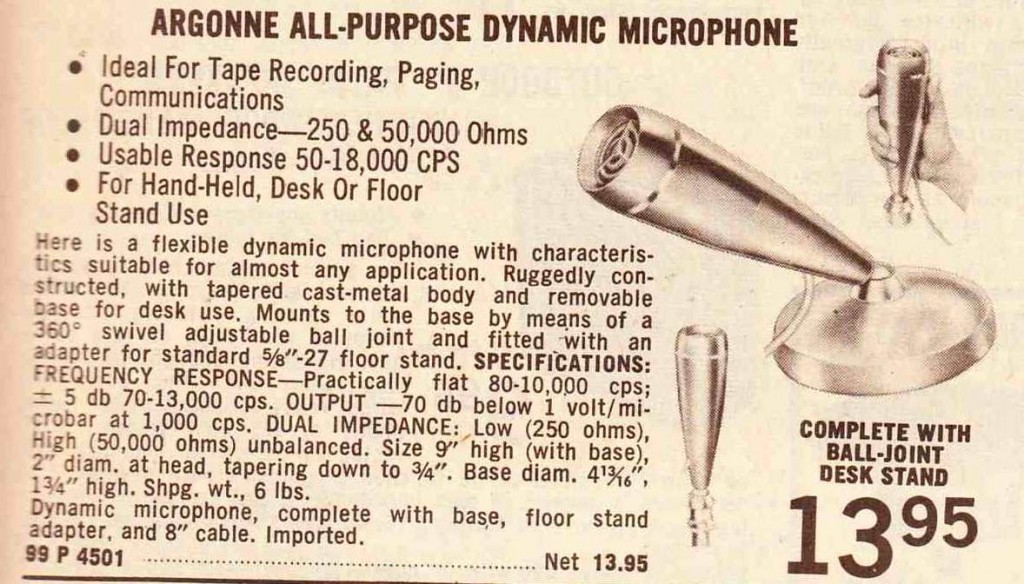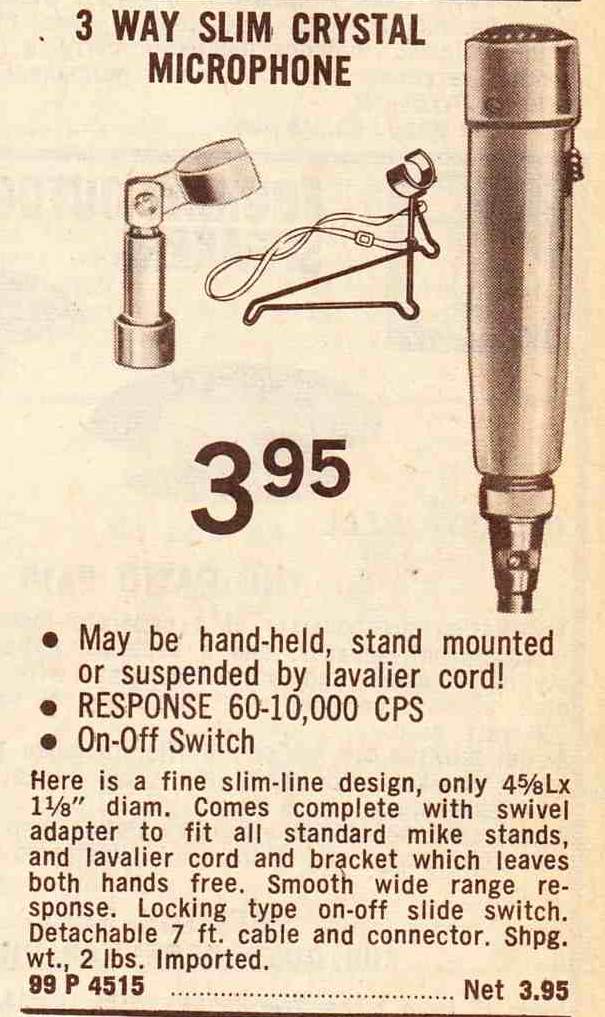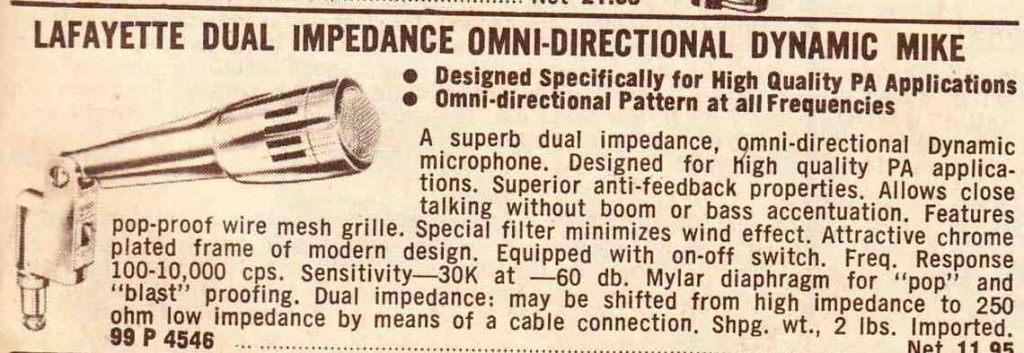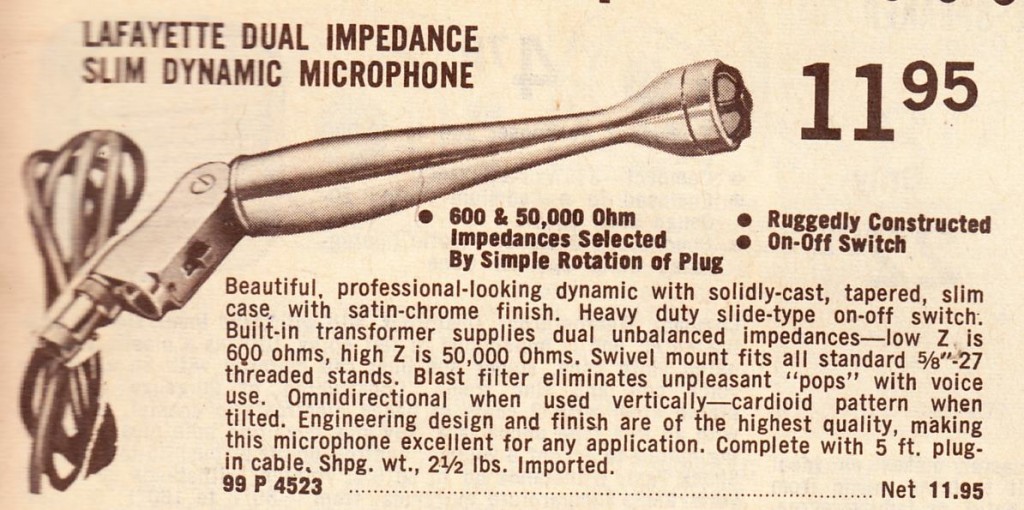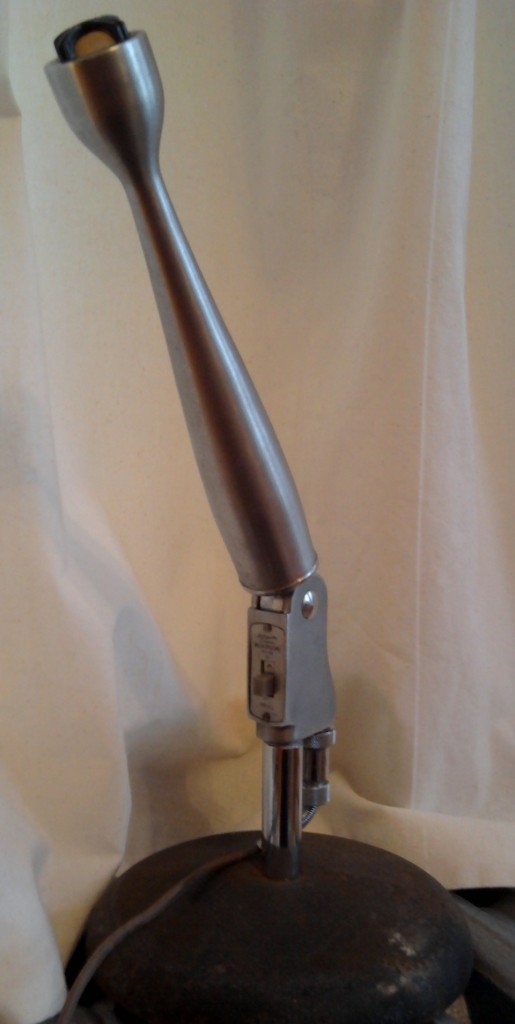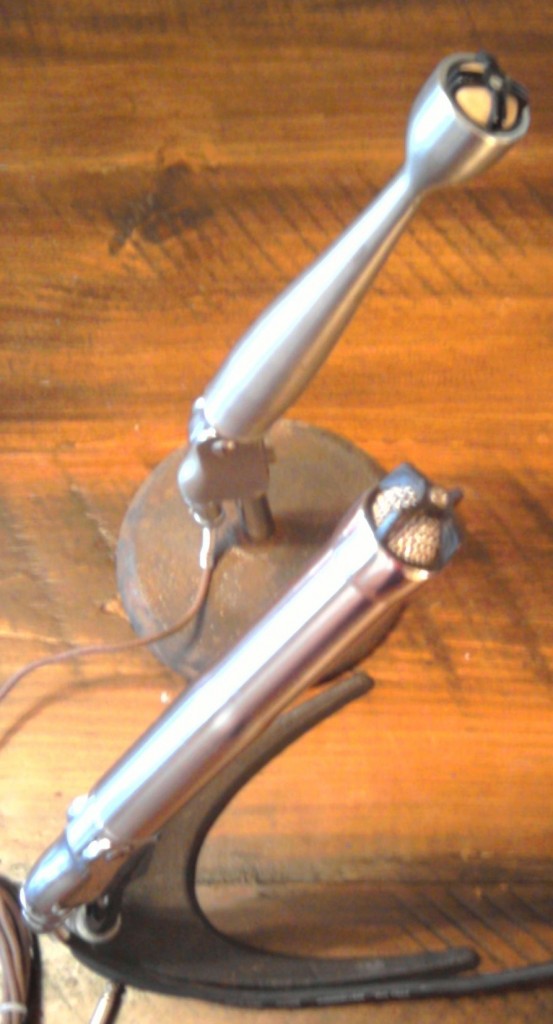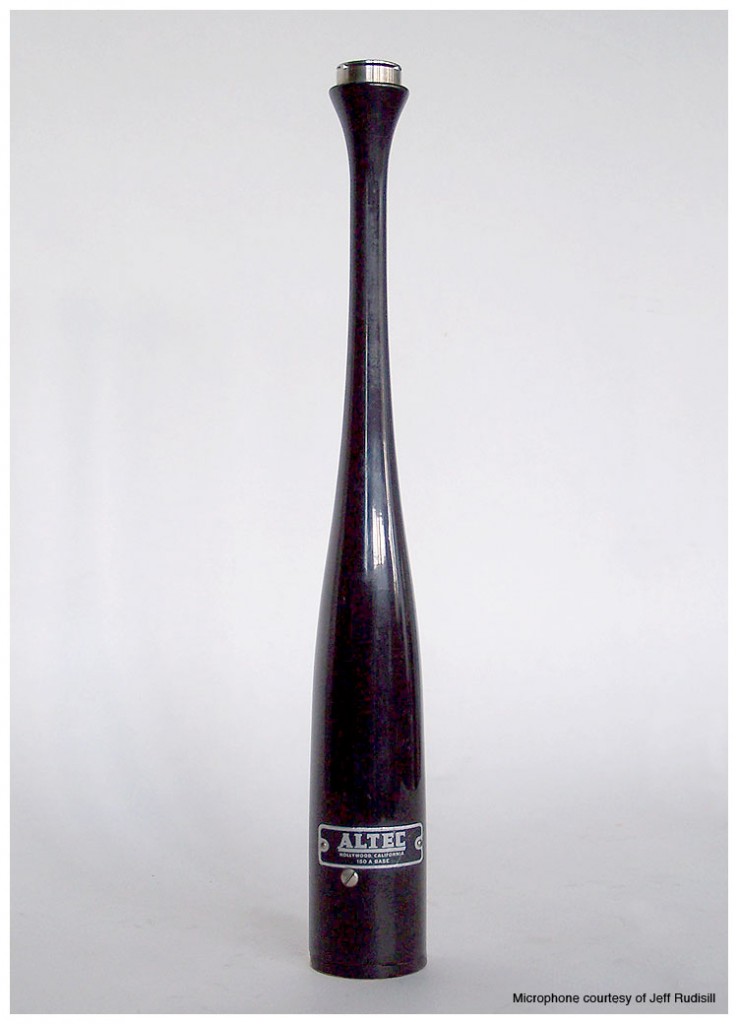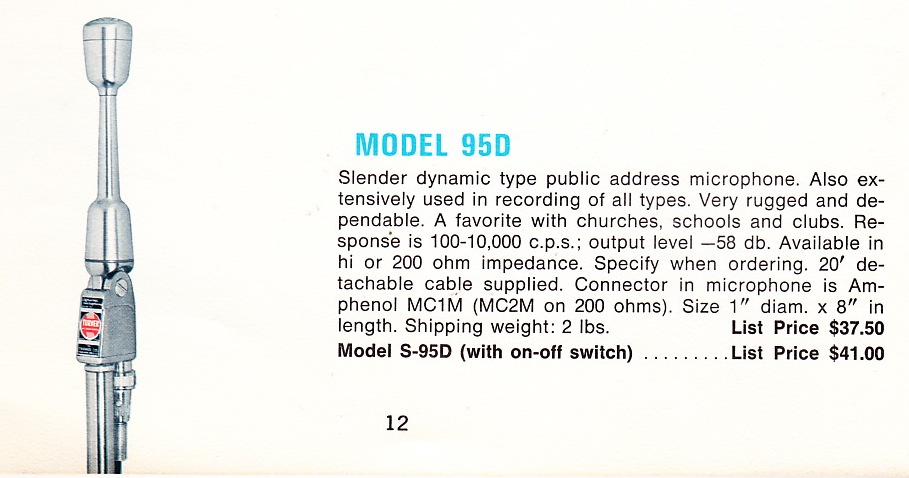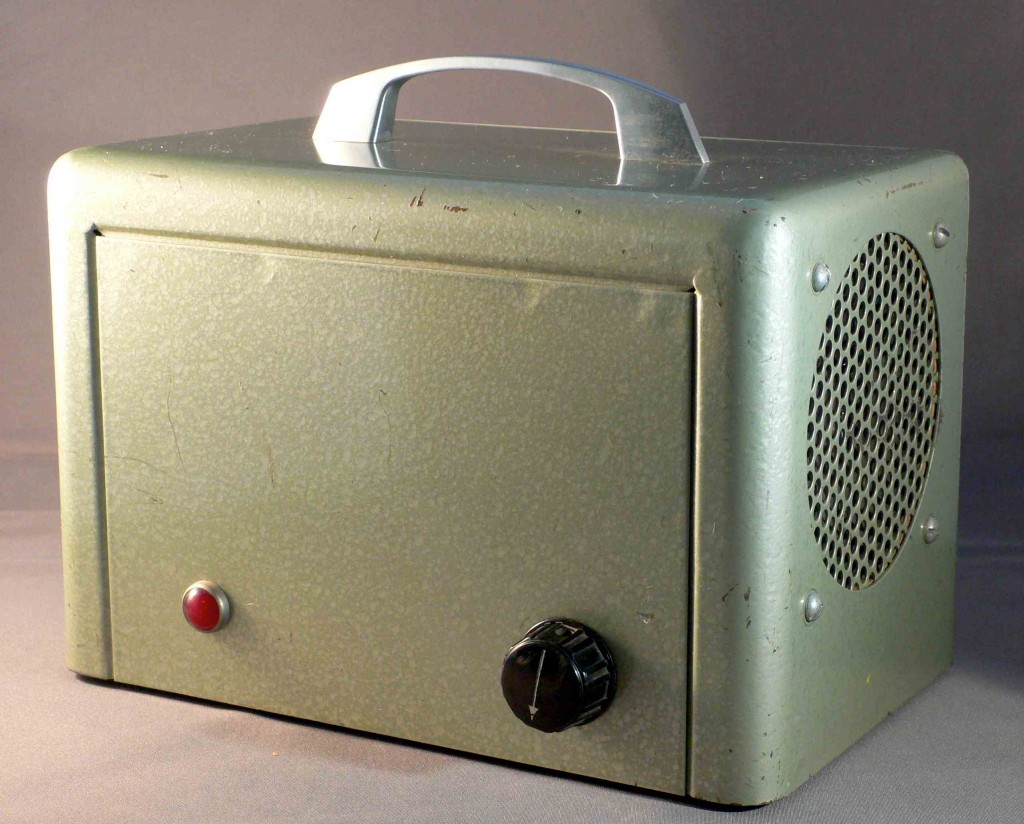 Magnasync/Moviola was a Los-Angeles based manufacturer of film editing equipment. They did make a few audio products designed to support the large upright and flatbed Moviola film-editing machines which were their main products. The most common of these audio-products is the URS 5-watt tube amplifier with built in 4″ AlNiCo speaker. The URS apparently debuted sometime around 1955.
Magnasync/Moviola was a Los-Angeles based manufacturer of film editing equipment. They did make a few audio products designed to support the large upright and flatbed Moviola film-editing machines which were their main products. The most common of these audio-products is the URS 5-watt tube amplifier with built in 4″ AlNiCo speaker. The URS apparently debuted sometime around 1955.
I recently purchased a pair of these things for a few bucks. Aside from needing new pilot bulbs and some contact cleaner in the volume pot, they seemed to be working alright.
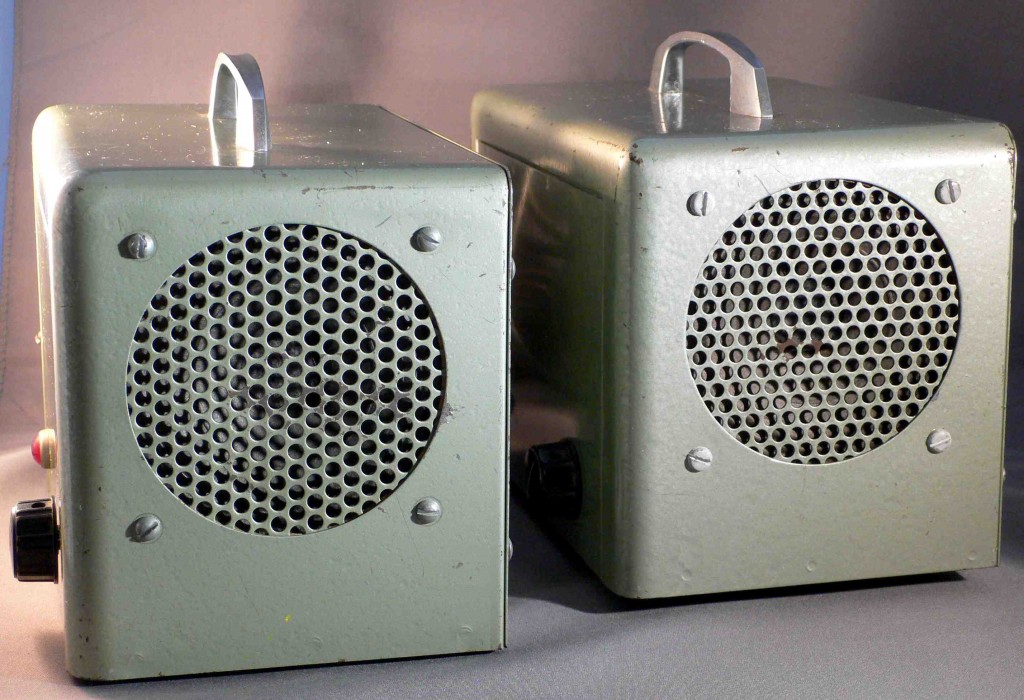 The rear of the unit (not shown) has a 1/4″ speaker jack (labeled ‘Headphones” which mutes the built in speaker when a cable is inserted. Other than that, though, there was no obvious input jack. There is a 4-pin amphenol jack with DC present on 3 of the pins. the 4th pin is the audio input. Ahh Ok. There is a also a single-pin DC power connector/takeoff? Not sure.
The rear of the unit (not shown) has a 1/4″ speaker jack (labeled ‘Headphones” which mutes the built in speaker when a cable is inserted. Other than that, though, there was no obvious input jack. There is a 4-pin amphenol jack with DC present on 3 of the pins. the 4th pin is the audio input. Ahh Ok. There is a also a single-pin DC power connector/takeoff? Not sure.
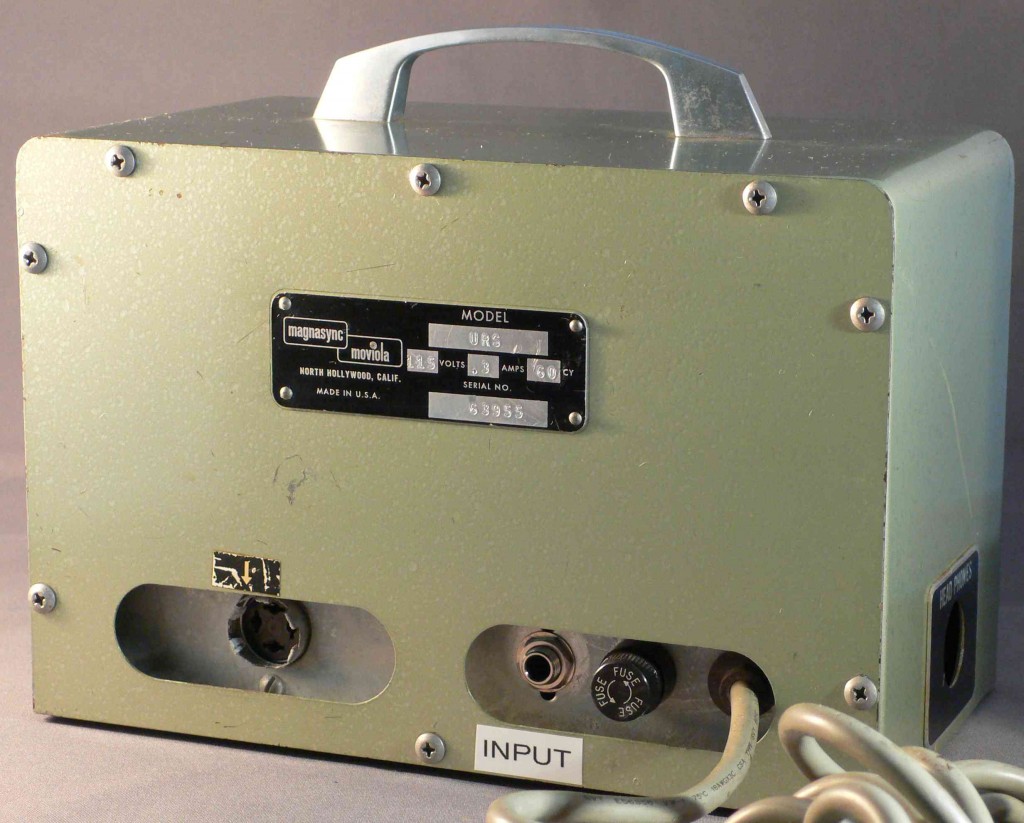 Anyhow, kinda irrelevant. Since no one is going to be using these things with an actual Moviola sound-head, figured I would just make em into lil guitar amps. OK it’s gonna get a little technical here, so pls skip the next paragraph if you wanna just get to the sounds…
Anyhow, kinda irrelevant. Since no one is going to be using these things with an actual Moviola sound-head, figured I would just make em into lil guitar amps. OK it’s gonna get a little technical here, so pls skip the next paragraph if you wanna just get to the sounds…
Since the tube compliment is 7025 (aka 12AX7) – into 6AQ5 power tube (aka basically lower-voltage rated, small-bottle 6V6) with a single volume pot between the two 7025 stages, this thing is basically…. a tweed fender champ. Yes, there are some important differences – different plate resistor values, no cathode bypass caps on the preamp stages, and i think some frequency compensation in a the feedback loop? But basically a tweed champ. ANYhow… Following the advice offered here, i put a 1/4″ guitar jack where the single-pin power socket had been. Then i simply added the other basic components of a Fender guitar-input-stage: a 1m resistor to ground, and a 68k resistor between the input and the grid of the input tube stage. Replaced the 2-wire AC cable with a 3-wire grounded cable, and done.
There is plenty of talk on the web about these things… lotsa folks have converted these to guitar amps in the same manner that i discussed… and people seem to be very happy with them. Check out this fellow’s work. He did an especially thorough job. I was personally kinda shocked with the sound that it makes. Never in my life have i heard so much distortion and fuzz out of an amp. It really is, pardon my language, fucking insane. Here’s 3 sound clips. (Gibson Firebird gtr. SM57 3″ in front of the speaker, into MBox. ‘Clean’ and ‘Overdrive’ examples have analog echo pedal between the guitar and the amp. Fuzz is just the amp. No other eq or processing applied). Check it…
Clean: Magnasync_URS_clean
Overdrive, fingerpicked: Magnasync_URS_overdriven
Fuzzed out (max volume): Magnasync_URS_fuzz
*************
*******
***
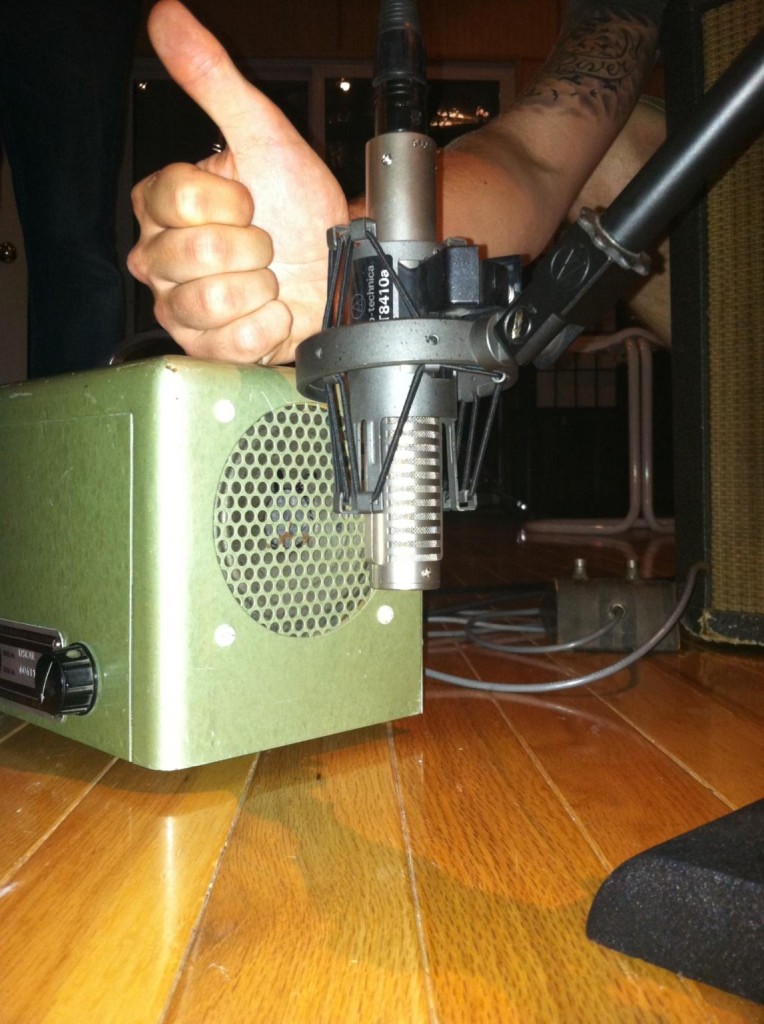 UPDATE: One of the two URS conversions that I built was purchased by producer P.K. for use on an album project with a new band out of London. When the record comes out (assuming the URS tracks make the final mix), I’ll post links to the cuts here so that y’all can hear the sound of these fantastic little amps in-context.
UPDATE: One of the two URS conversions that I built was purchased by producer P.K. for use on an album project with a new band out of London. When the record comes out (assuming the URS tracks make the final mix), I’ll post links to the cuts here so that y’all can hear the sound of these fantastic little amps in-context.
Oh and about that other URS conversion that I built: as of today, it is still on-sale at Main Drag Music in Brooklyn NY for a mere $250. Call or email them if yr interested.
